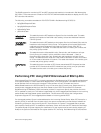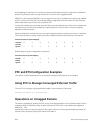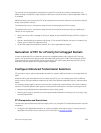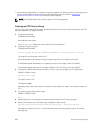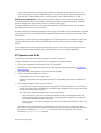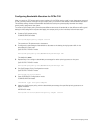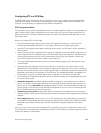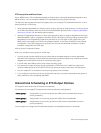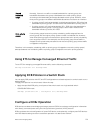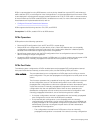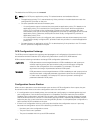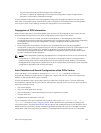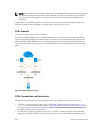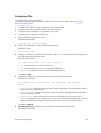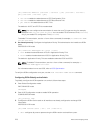
Unused
bandwidth
usage:
Normally, if there is no traffic or unused bandwidth for a priority group, the
bandwidth allocated to the group is distributed to the other priority groups
according to the bandwidth percentage allocated to each group. However, when
three priority groups with different bandwidth allocations are used on an interface:
• If priority group 3 has free bandwidth, it is distributed as follows: 20% of the free
bandwidth to priority group 1 and 30% of the free bandwidth to priority group 2.
• If priority group 1 or 2 has free bandwidth, (20 + 30)% of the free bandwidth is
distributed to priority group 3. Priority groups 1 and 2 retain whatever free
bandwidth remains up to the (20+ 30)%.
Strict-priority
groups:
If two priority groups have strict-priority scheduling, traffic assigned from the
priority group with the higher priority-queue number is scheduled first. However,
when three priority groups are used and two groups have strict-priority scheduling
(such as groups 1 and 3 in the example), the strict priority group whose traffic is
mapped to one queue takes precedence over the strict priority group whose traffic
is mapped to two queues.
Therefore, in this example, scheduling traffic to priority group 1 (mapped to one strict-priority queue)
takes precedence over scheduling traffic to priority group 3 (mapped to two strict-priority queues).
Using ETS to Manage Converged Ethernet Traffic
To use ETS for managing converged Ethernet traffic, use the following command:
dcb-map stack-unit all dcb-map-name
Applying DCB Policies in a Switch Stack
You can apply DCB policies with PFC and ETS configurations to all stacked ports in a switch stack or on a
stacked switch.
To apply DCB policies in a switch stack, follow this step.
• Apply the specified DCB policy on all ports of the switch stack or a single stacked switch.
CONFIGURATION mode
dcb-map {stack-unit all | stack-ports all} dcb-map-name
Configure a DCBx Operation
DCB devices use data center bridging exchange protocol (DCBx) to exchange configuration information
with directly connected peers using the link layer discovery protocol (LLDP) protocol.
DCBx can detect the misconfiguration of a peer DCB device, and optionally, configure peer DCB devices
with DCB feature settings to ensure consistent operation in a data center network.
Data Center Bridging (DCB)
271



